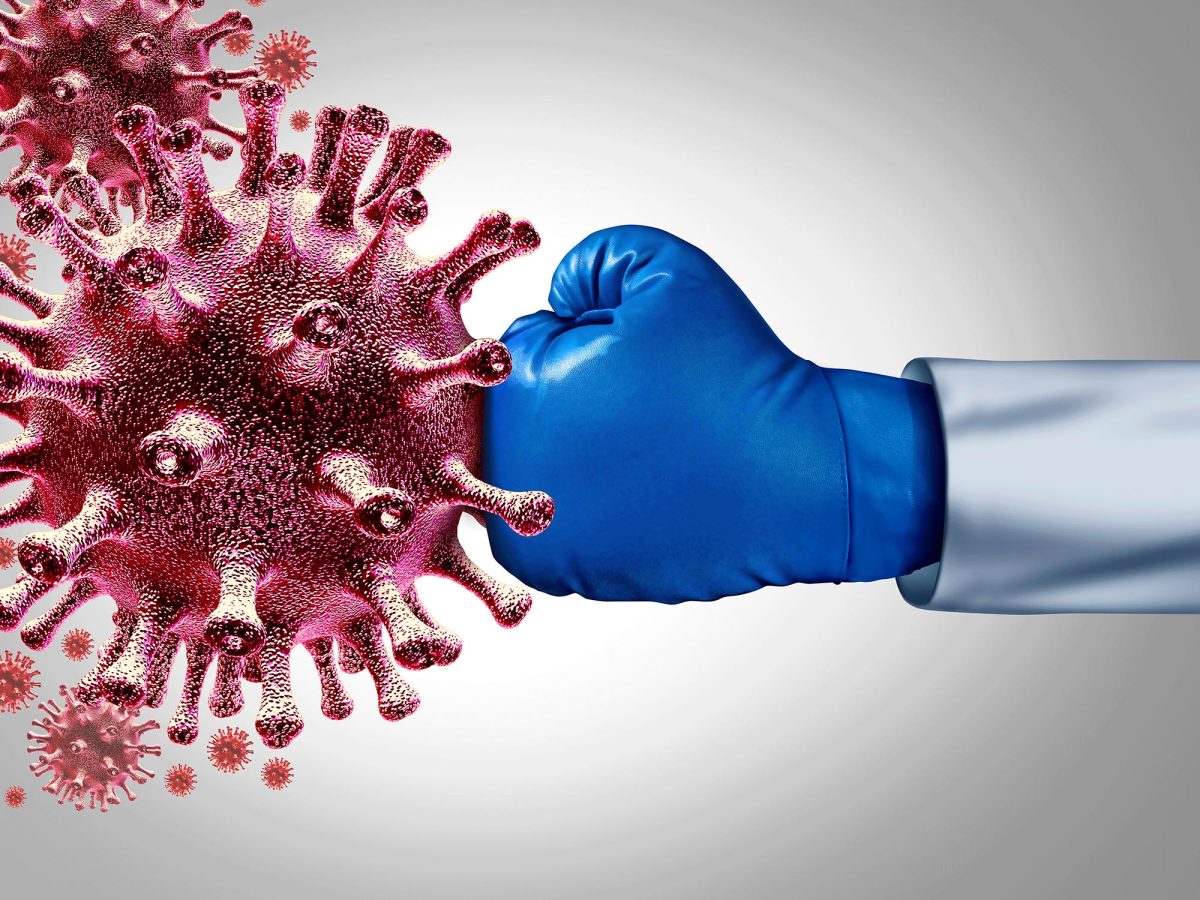Researchers at Dana-Farber Cancer Institute have created a powerful drug that can effectively neutralize the SARS-CoV-2 coronavirus, including the Omicron variant and all other tested variants. The innovative design of the drug allows it to remain effective against future variants, even if the virus undergoes natural selection to maintain its infectiousness.
Investigational drug works differently than antibody drugs which are losing effectiveness against the COVID-19 virus.
Scientists have developed a drug that potently neutralizes SARS-CoV-2, the COVID-19 coronavirus, and is equally effective against the Omicron variant and every other tested variant. The drug is designed in such a way that natural selection to maintain infectiousness of the virus should also maintain the drug’s activity against future variants.
The investigational drug was developed by researchers at Dana-Farber Cancer Institute. As described in a report published on December 7 in the journal Science Advances, the drug is not an antibody, but a related molecule known as an ACE2 receptor decoy. Unlike antibodies, the ACE2 decoy is far more difficult for the SARS-CoV-2 virus to evade because mutations in the virus that would enable it to avoid the drug would also reduce the virus’s ability to infect cells. The Dana-Farber scientists found a way to make this type of drug neutralize coronaviruses more potently in animals infected with COVID-19 and to make it safe to give to patients.
This report comes at a time when antibody drugs used to treat COVID-19 have lost their effectiveness because the viral spike protein has mutated to escape being targeted by the antibodies.
The researchers, led by first author James Torchia, MD, PhD, and senior author Gordon Freeman, PhD, identified features that make ACE2 decoys especially potent and long-lasting. For example, they found that when they included a piece of the ACE2 protein called the collectrin-like domain, it made the drug stick more tightly to the virus and have a longer life in the body. Their experiments showed that ACE2 decoys have potent activity against the COVID-19 virus because they trigger an irreversible change in the structure of the virus — they “pop” the top off the viral spike protein so it can’t bind to the cell-surface ACE2 receptor and infect cells.
The SARS-CoV-2 virus is covered with projections called spike proteins that enable the virus to infect cells. The spike protein binds to the ACE2 receptor on the cell surface and then refolds, driving the spike into the cell, enabling the virus to enter. ACE2 decoys lure the virus to bind to the decoy instead of the cell, “popping” the spike and inactivating the virus before it can enter cells. This explains the drug’s surprising potency: not only does it function as a competitive inhibitor, but it permanently inactivates the virus. Since binding to ACE2 is required for infection, variants can change but they must continue to bind to ACE2, making the drug persistently active against all variants.
The researchers say that, in addition to treating antibody-resistant variants of SARS-CoV-2, the drug described in this study could be useful to treat new coronaviruses that might emerge in the future to infect humans. This is because many coronaviruses in nature poised to enter the human population also utilize ACE2 to infect cells.
While the drug, called DF-COV-01, has not yet been tested in humans, manufacturing development is nearly complete and preclinical studies needed for regulatory approval are underway, with the goal of advancing the drug to clinical trials.
“Optimized ACE2 decoys neutralize antibody-resistant SARS-CoV-2 variants through functional receptor mimicry and treat infection in vivo” by James A. Torchia, Alexander H. Tavares, Laura S. Carstensen, Da-Yuan Chen, Jessie Huang, Tianshu Xiao, Sonia Mukherjee, Patrick M. Reeves, Hua Tu, Ann E. Sluder, Bing Chen, Darrell N. Kotton, Richard A. Bowen, Mohsan Saeed, Mark C. Poznansky and Gordon J. Freeman, 7 December 2022, Science Advances.
DOI: 10.1126/sciadv.abq6527
This work was supported by a Department of Defense CDMRP Peer Reviewed Medical Research Program Technology/Therapeutic Development Award. Additional support was provided by a National Instititutes of Health grant, an Evergrande MassCPR award, and a grant from COVID-19 FastGrants.
The work was performed by a collaborative team including scientists from Dana-Farber Cancer Institute, Massachusetts General Hospital Vaccine and Immunotherapy Center, Boston University Aram V. Chobanian & Edward Avedisian School of Medicine, the National Emerging Infectious Disease Laboratory at Boston University, Colorado State University, and Boston Children’s Hospital.
Share your story or advertise with us: Whatsapp: +2347068606071 Email: info@newspotng.com











